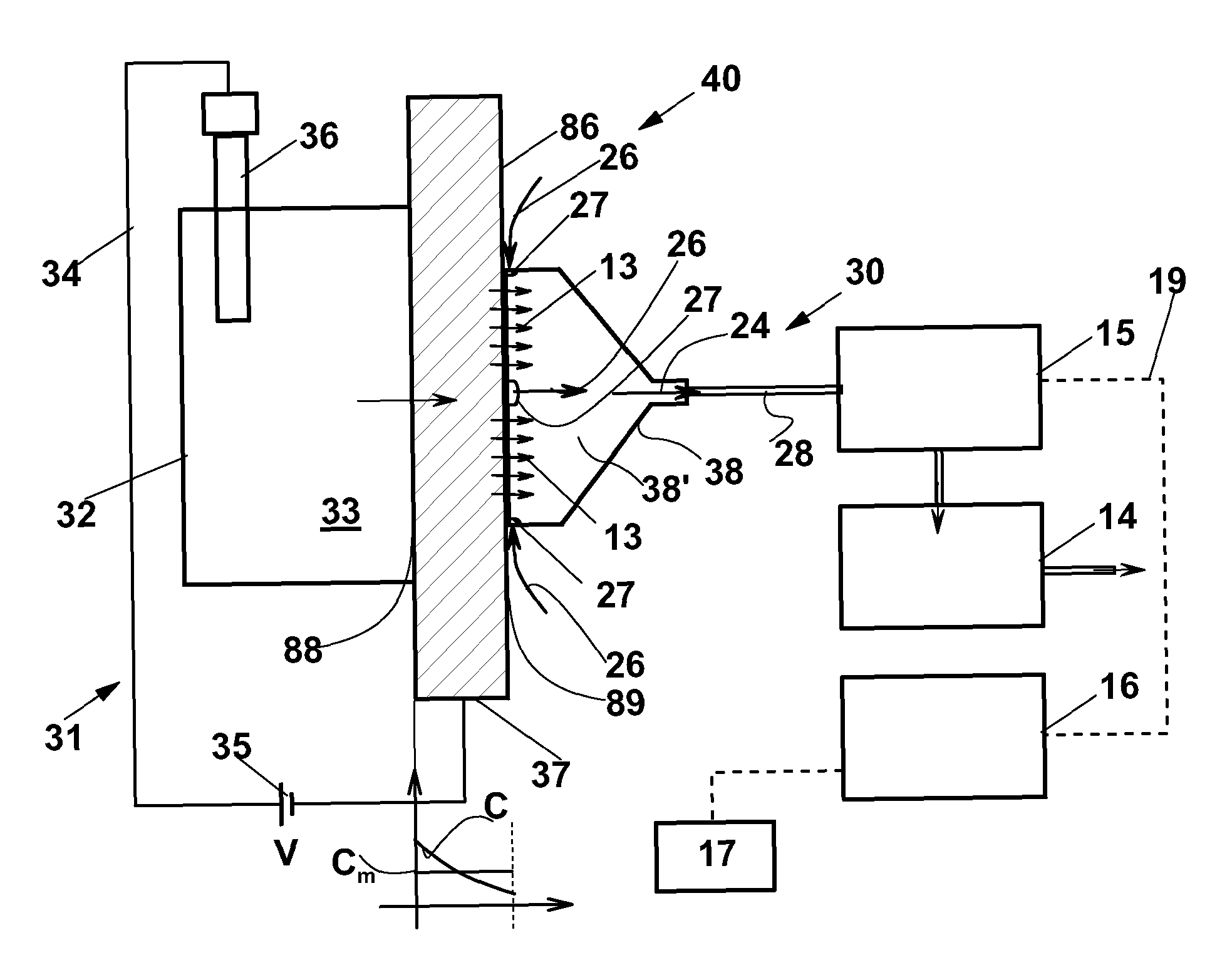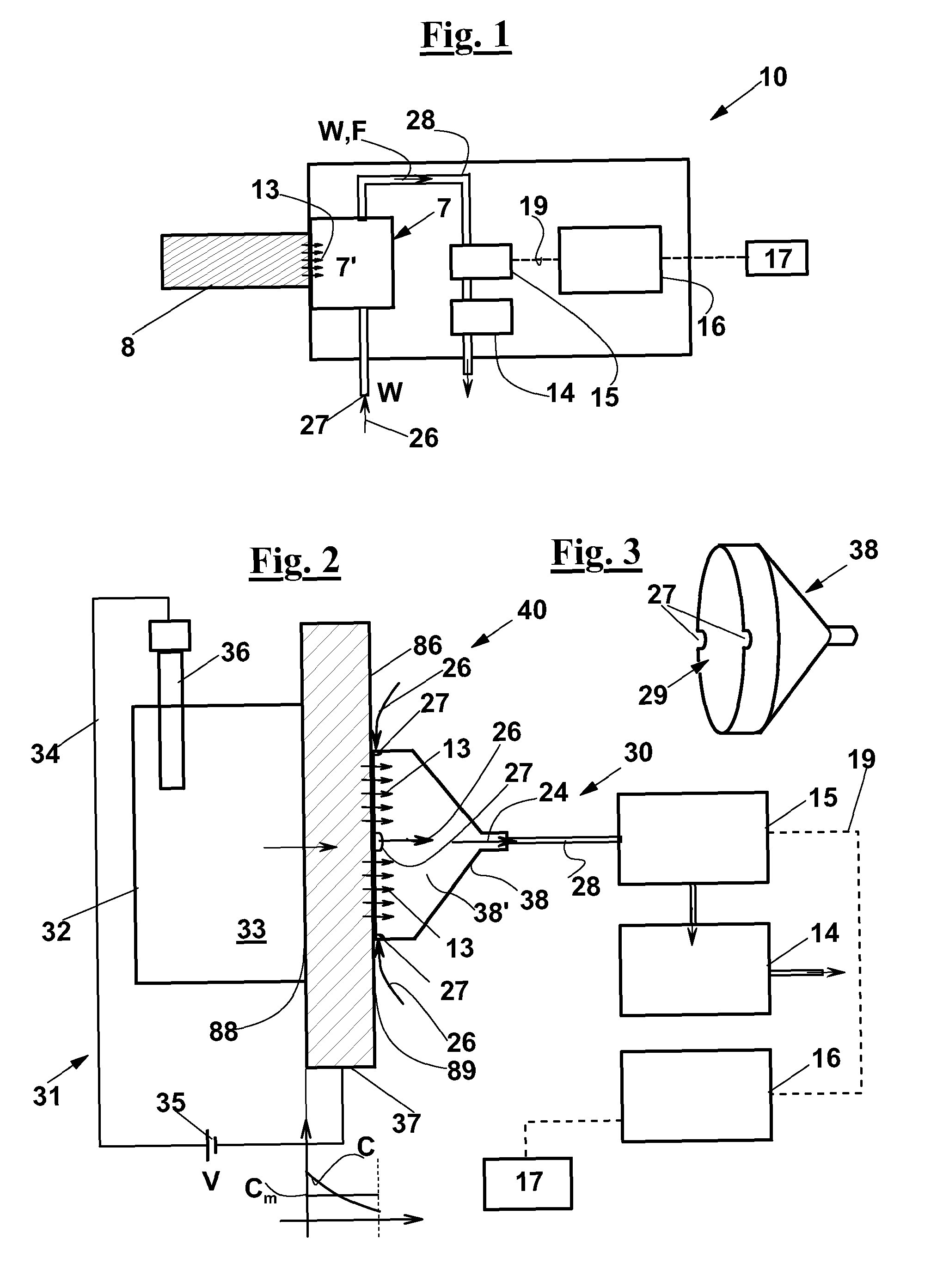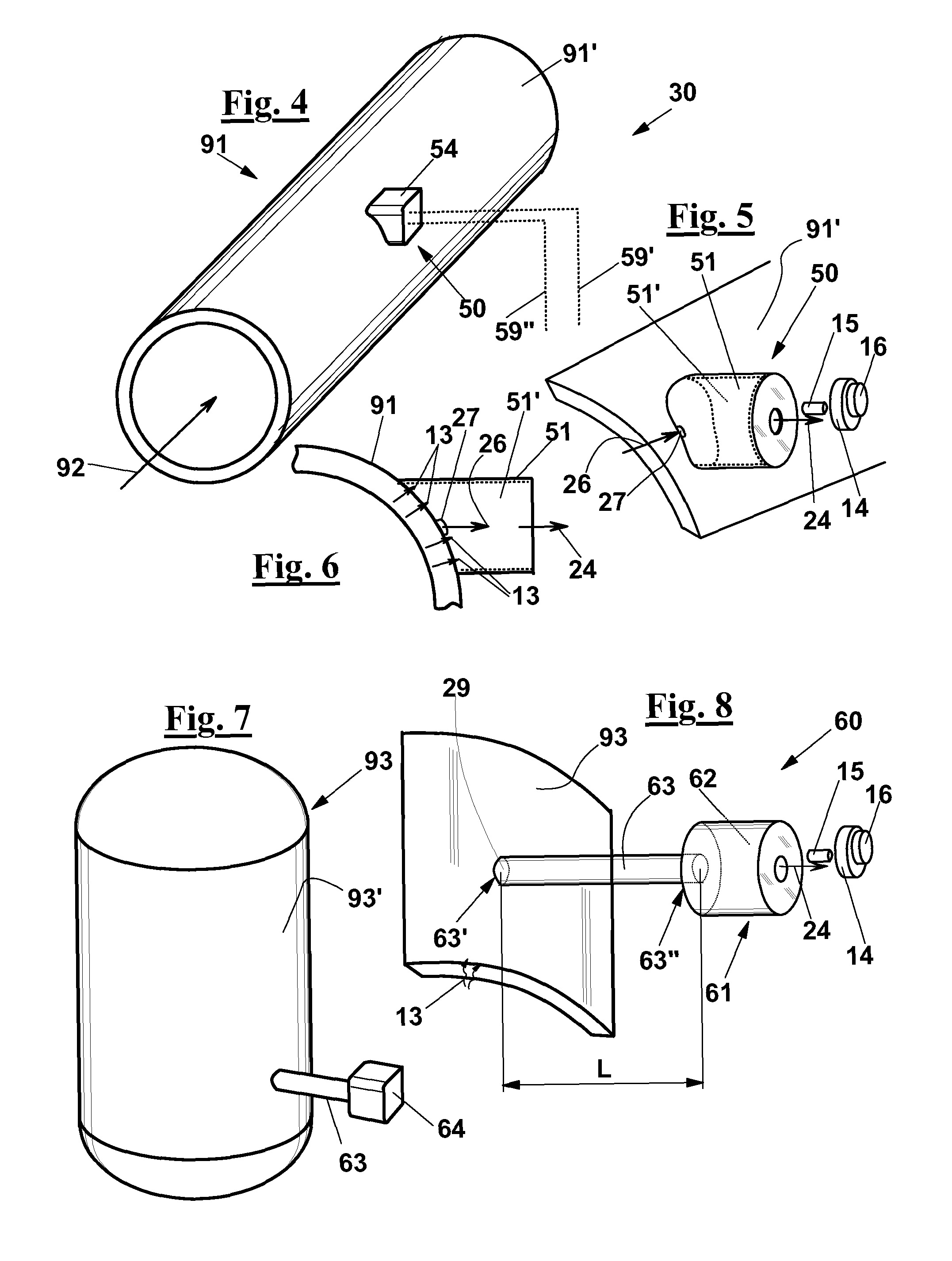A device and a method for permeation hydrogen measurements
a hydrogen measurement and device technology, applied in the field of devices and methods for permeation hydrogen measurements, can solve the problems of hydrogen being absorbed into the metal, reducing the strength of the metal workpiece, and giving rise to hydrogen embrittlement, so as to reduce the number of late recalls, correct possible excessive hydrogen absorption, and evaluate the quality of the treated workpiece in a very short time and non-destructively
- Summary
- Abstract
- Description
- Claims
- Application Information
AI Technical Summary
Benefits of technology
Problems solved by technology
Method used
Image
Examples
Embodiment Construction
[0098]With reference to FIG. 1, a device 10 is described for measuring an hydrogen amount 13 emanating from a workpiece 8, in order to characterize an interaction between workpiece 8 and a content of hydrogen absorbed in workpiece 8. The device comprises a probe 7 that includes a mixing chamber 7′ that is accessible to hydrogen amount 13 that emanates from workpiece 8 due to the presence of hydrogen absorbed therewithin, and that is equipped with an inlet port 27 for a measurement gas 26. The inlet port can be an environmental air intake port or a nozzle suitable for connection to a container like a gas bottle, containing a pressurized gas, e.g. air, not shown. Device 10 also comprises a solid-state sensor 15, and a connection means 28 for pneumatically connecting sensor 15 with mixing chamber 7′. Device 10 further comprises a gas conveying means 14 for conveying the measurement gas from inlet port 27 towards solid-state sensor 15, at a predetermined flowrate W. Due to the conveying...
PUM
| Property | Measurement | Unit |
|---|---|---|
| temperatures | aaaaa | aaaaa |
| temperatures | aaaaa | aaaaa |
| temperature | aaaaa | aaaaa |
Abstract
Description
Claims
Application Information
 Login to View More
Login to View More - R&D
- Intellectual Property
- Life Sciences
- Materials
- Tech Scout
- Unparalleled Data Quality
- Higher Quality Content
- 60% Fewer Hallucinations
Browse by: Latest US Patents, China's latest patents, Technical Efficacy Thesaurus, Application Domain, Technology Topic, Popular Technical Reports.
© 2025 PatSnap. All rights reserved.Legal|Privacy policy|Modern Slavery Act Transparency Statement|Sitemap|About US| Contact US: help@patsnap.com



